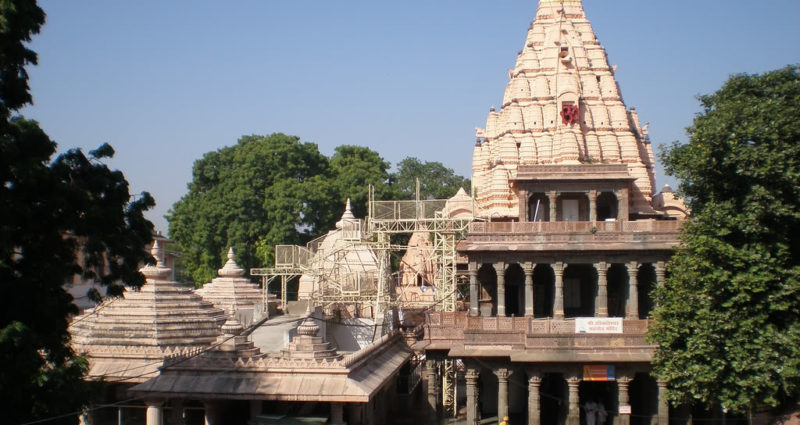Mahakaleshwar jyotirlinga: the eternal abode of lord shiva in ujjain
introduction:
nestled on the banks of the sacred kshipra river in ujjain, madhya pradesh, the mahakaleshwar jyotirlinga stands as a timeless symbol of divinity and spiritual sanctity. This revered shrine, dedicated to lord shiva, is not only one of the twelve jyotirlingas but also an embodiment of the eternal cosmic force. Let’s embark on a spiritual journey to explore the significance, history, and spiritual aura of mahakaleshwar.
Historical and mythological significance:
mahakaleshwar jyotirlinga is steeped in history and mythology, dating back to ancient times. Legends tell of a fierce battle between lord shiva and the demon tripurasura, during which a drop of sweat fell from shiva’s forehead and transformed into a lingam, marking the sacred spot. The lingam is said to be swayambhu, or self-manifested, symbolizing the infinite nature of lord shiva.
Architecture and sacred complex:
the temple complex housing mahakaleshwar jyotirlinga showcases a remarkable blend of maratha, rajput, and architectural styles. The five-tiered spire, known as the shikhara, adorned with intricate carvings, stands tall as a testament to the artistic grandeur of ancient india. The sanctum sanctorum, where the jyotirlinga is enshrined, exudes an atmosphere of deep spirituality, drawing pilgrims into a state of reverence and devotion.
Rituals and worship:
mahakaleshwar temple is known for its elaborate rituals and daily worship ceremonies. The bhasma aarti, where the lingam is adorned with ash (bhasma), is a unique and highly revered practice. Devotees believe that witnessing this ritual grants divine blessings and absolves them of sins. The temple also hosts various other pujas and aartis throughout the day, creating a continuous flow of devotional energy.
Bhartrihari caves:
adjacent to the mahakaleshwar temple are the bhartrihari caves, named after the renowned philosopher-poet bhartrihari, who is said to have meditated here. The caves add a tranquil dimension to the pilgrimage, providing a space for contemplation and introspection.
Simhastha kumbh mela:
ujjain is one of the four locations where the kumbh mela is held, and mahakaleshwar temple plays a central role during the simhastha kumbh mela. The event, which occurs every twelve years, attracts millions of pilgrims who come to bathe in the sacred kshipra river and seek the blessings of lord shiva.
Transportation:
by air:
the nearest airport is devi ahilya bai holkar airport in indore, approximately 55 kilometers away. From the airport, visitors can hire taxis or use public transportation to reach ujjain.
By train:
ujjain junction railway station is well-connected to major cities in india, making it a convenient option for rail travel. From the railway station, local transportation options are available to reach the mahakaleshwar temple.
By road:
ujjain has a well-developed road network, and buses, private vehicles, and taxis are popular modes of transportation. The town is accessible by road from nearby cities, including indore.
Accommodations:
ujjain offers a range of accommodations to suit different preferences and budgets. Pilgrims and tourists can find guesthouses, lodges, and hotels in the town, ensuring a comfortable stay during their pilgrimage.
Conclusion:
mahakaleshwar jyotirlinga in ujjain is not just a temple; it is a divine realm where the past, present, and future converge. The spiritual energy, historical significance, and architectural splendor make it a must-visit destination for those seeking a profound connection with lord shiva. As pilgrims bow before the sacred lingam, they become part of a timeless tradition, and the echoes of devotion resonate through the corridors of mahakaleshwar, embracing all who seek solace and divine grace.
Author,
Dhanush Kumar

Enter your email to get the Latest Updated Exploring News and Topics
Discover more from atozexplore.com
Subscribe to get the latest posts sent to your email.






